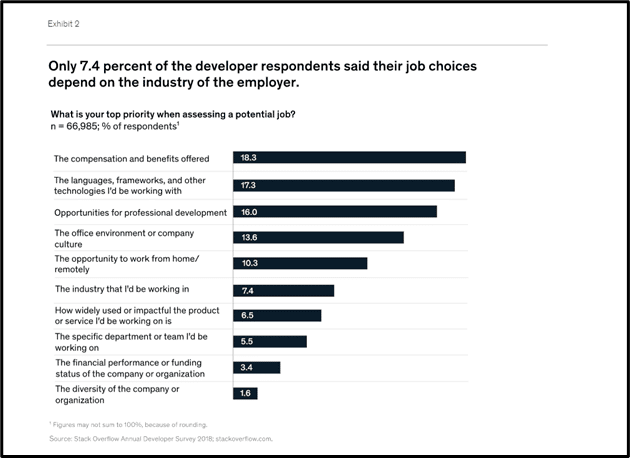
While the supply chain talent wars continue, it’s incumbent upon today’s business owners to consider whether the technology they use day to day has any ‘wow’ factor. Demand parameter optimization has that ‘wow’ factor.
In this post we look beyond the more conspicuous and well-documented benefits of advanced supply chain technologies, such as increased speed to market, more efficient operations, improved customer satisfaction and the ability to thrive during ecosystem shocks large and small. This post considers the human element, the brains that use the technology to derive insights and take action.
As you’ve no doubt heard and perhaps experienced, the recruitment and retention of tech talent is a matter of great urgency. Many business leaders around the world are happy the pandemic is waning, but wondering where all the people have gone. More than 19 million U.S. workers have quit their jobs since April 2021, disrupting businesses everywhere.
The brain drain would rightly be viewed as critical even if the goal were to simply replace lost headcount. But it’s more dire than that; many companies have embarked on aggressive plans for incremental hiring in the coming years. Consider these statistics from McKinsey:
- Facebook plans to hire 10,000 people in Europe to build out its “metaverse”
- Amazon announced plans to add more than 55,000 people in the U.S. for corporate and technology jobs
- In Germany, 780,000 additional technology specialists are needed by 2026 to meet the estimated demand
- Globally, more than three million cybersecurity positions were open as of 2020.
Business leaders are feeling pressure. According to a McKinsey survey of more than 1,500 senior executives globally, 87% say their companies “are not adequately prepared to address the skill gap.”
Now let’s circle back and pose the question hinted at above: can commitment to and adoption of modern supply chain technology help recruit and retain top talent? The short answer is that talented knowledge-workers want to use the latest and greatest tools. McKinsey quotes a stack overflow survey that shows “the… technologies I’d be working with” is much more important than, for example, “the industry that I’d be working in” when making a job choice.

Beyond Excel
Of course, winning the supply chain talent war requires much more than committing to “an Excel-free work environment,” but continual access to modern solutions and capabilities is an aspect that businesses shouldn’t ignore. One such capability among many in the Logility® Digital Supply Chain Platform portfolio is demand parameter optimization (DPO), a machine learning application that automatically fine-tunes a subset of forecast parameters in order to improve forecast accuracy. DPO can process thousands of items simultaneously, selected by filter (such as inventory classification) or by alert (such as forecast error threshold). The result: a significant reduction in the amount of time spent manually tuning plus better quality forecasts.
And with improved forecast accuracy comes reductions in inventories, lost sales, expediting costs and obsolescence costs. Moreover, demand parameter optimization enables autonomous planning, reducing the hours spent by planners manually manipulating parameters. This in turn increases the time available for other planning tasks, such as exception analysis triggered by workflow alerts.
As one Logility customer put it: “Not one of my planners goes home at night and brags that they got to use a spreadsheet at work. But when they’re using modern planning tools like DPO to evaluate scenarios and reduce planning error, and they’re really in the zone, I see the joy of learning on their faces, and the joy that comes with knowing they are making a difference. They benefit, and so does the business.”
More Tech Doesn’t Equal More Value to the Customer
Logility’s Kevin McInturff, EVP of R&D, says: “At Logility, we offer the perfect blend of foundational strength and the desire to innovate. Our product visionaries never lose their footing. Companies that are overly enamored with their own technology often focus their efforts on the pursuit of the next shiny toy. The reality is more technology just for the sake of it does not always equal value for the client. While others give in to the temptation to be led by their technology, we will always allow the voice of the customer to guide us toward solving real supply chain problems.”
Read about how stichd – a division of PUMA – chose the Logility platform for its “sophisticated forecasting and clear visibility capabilities” in this recent press release.


